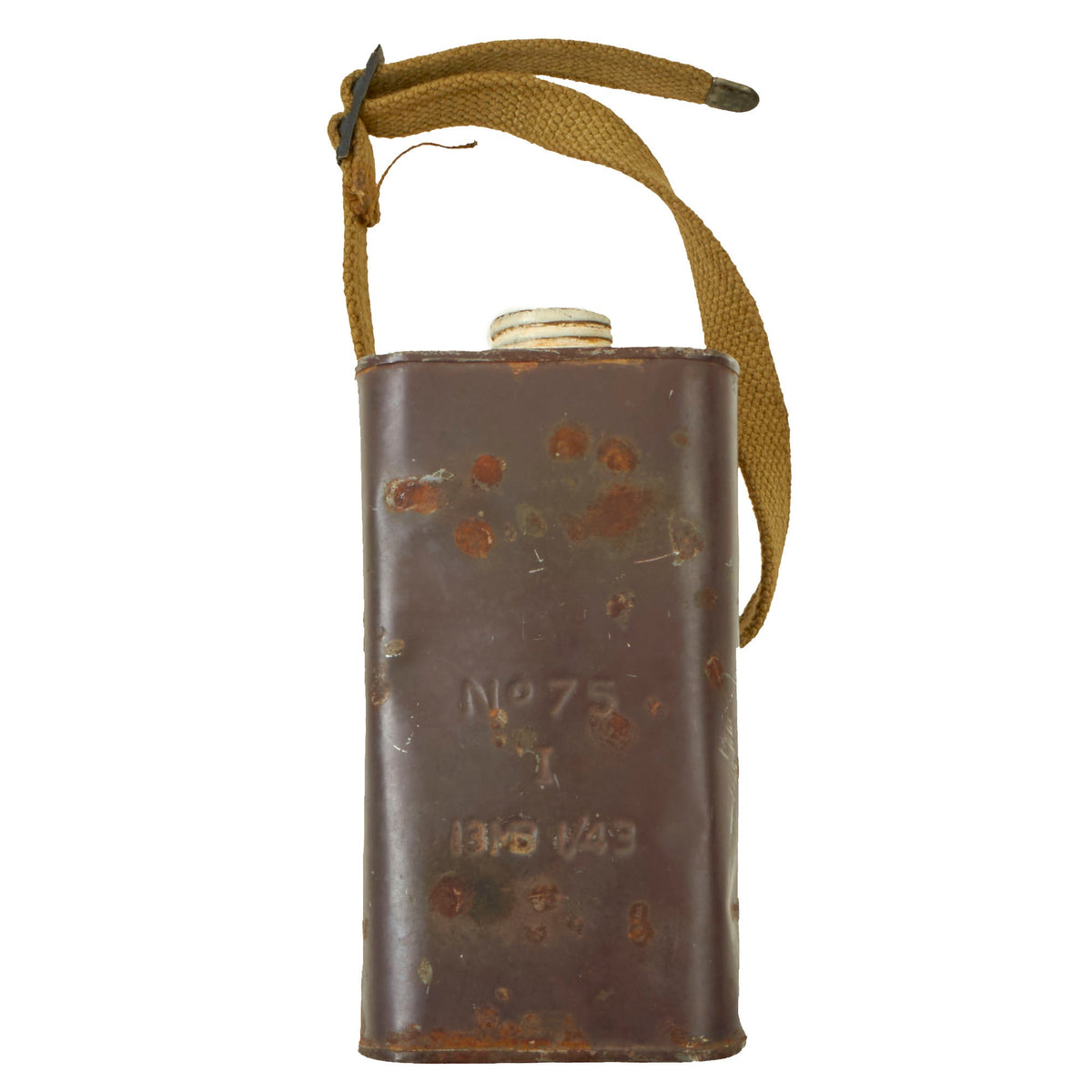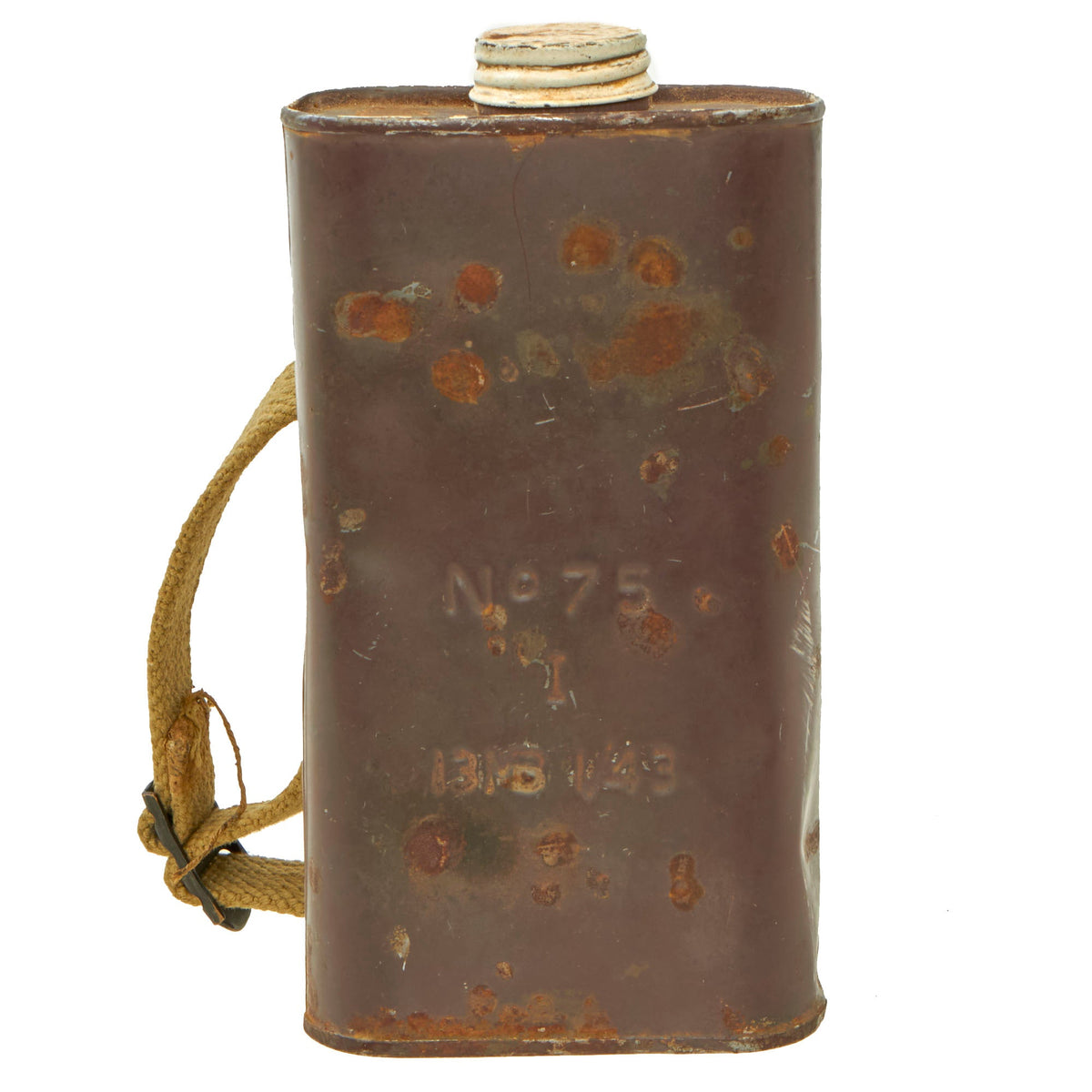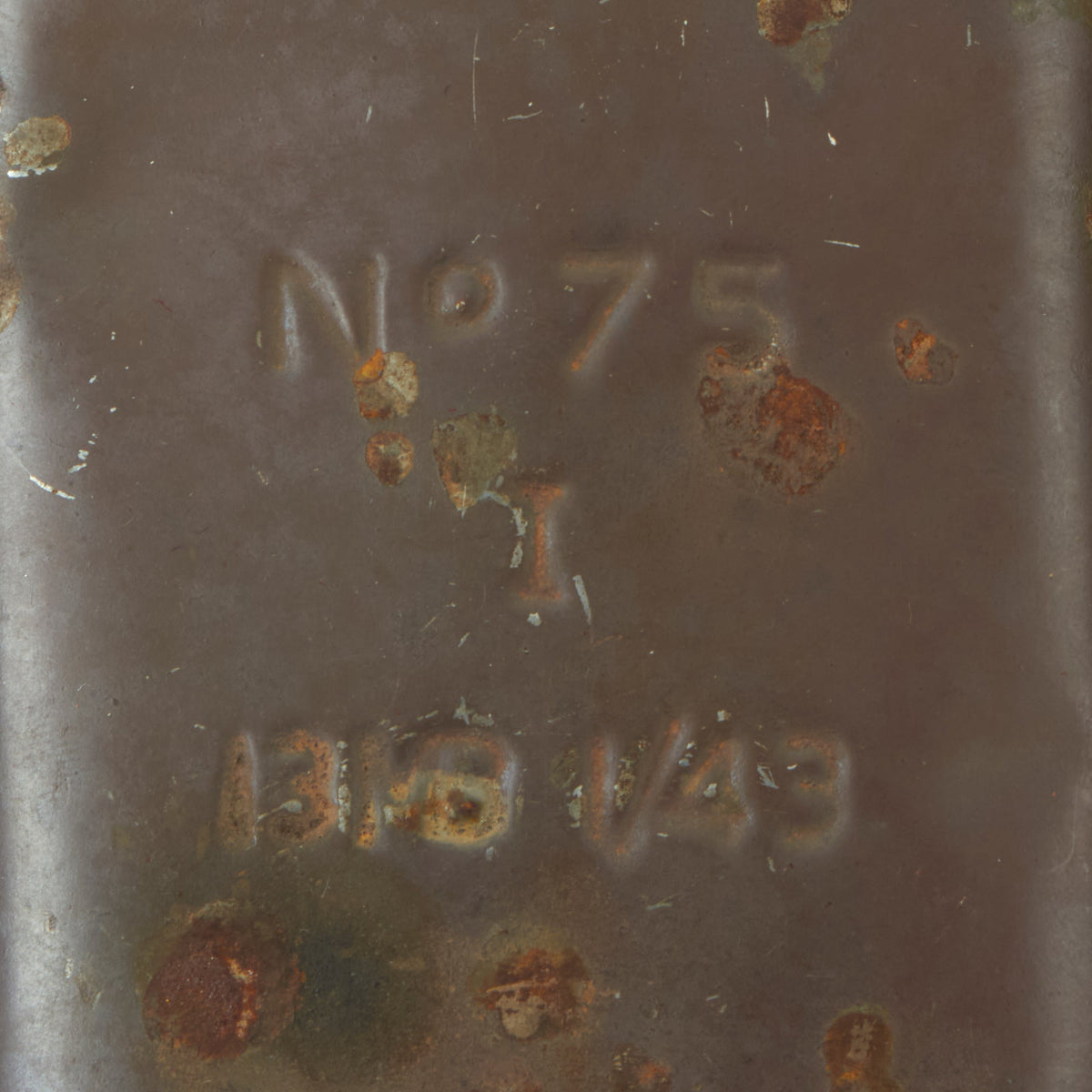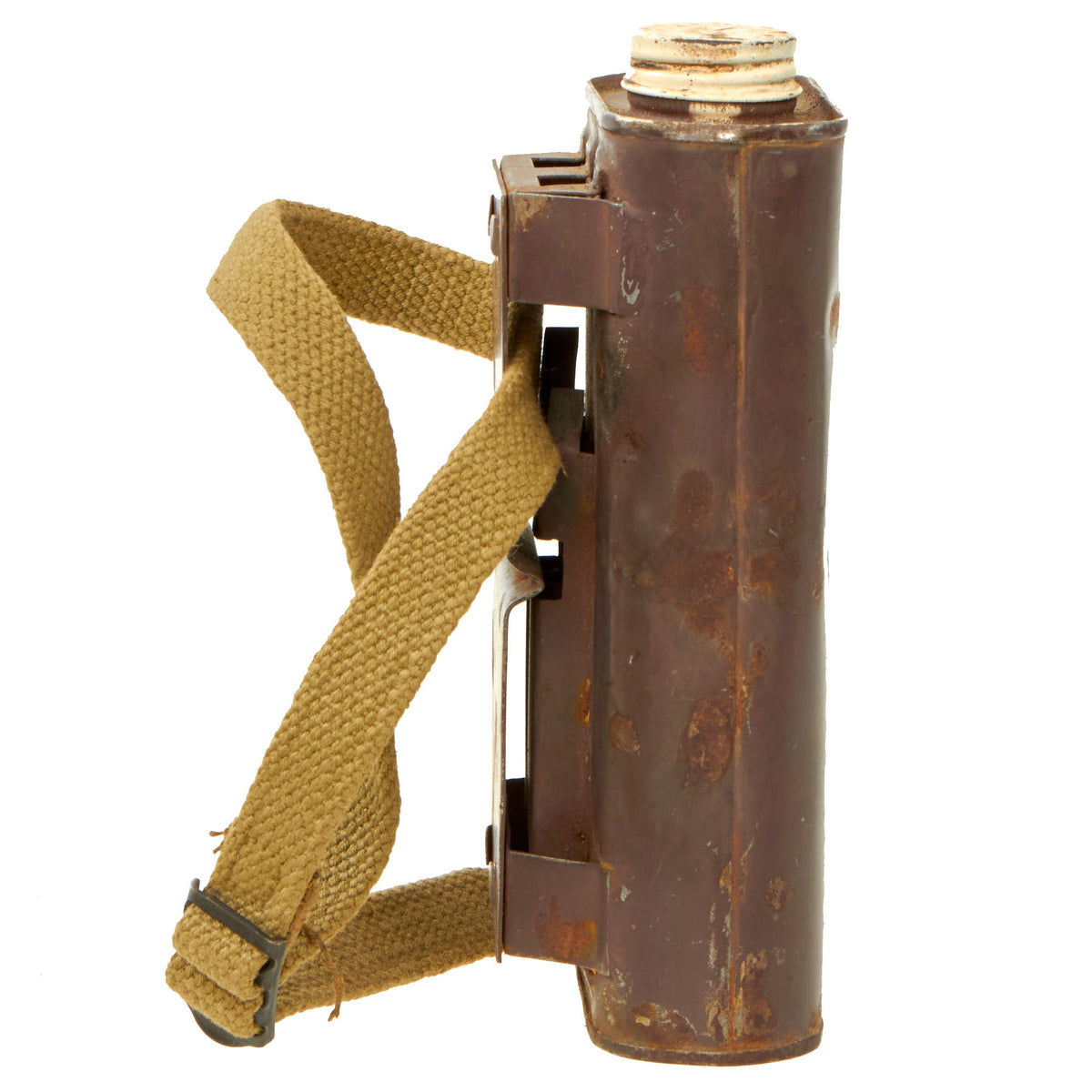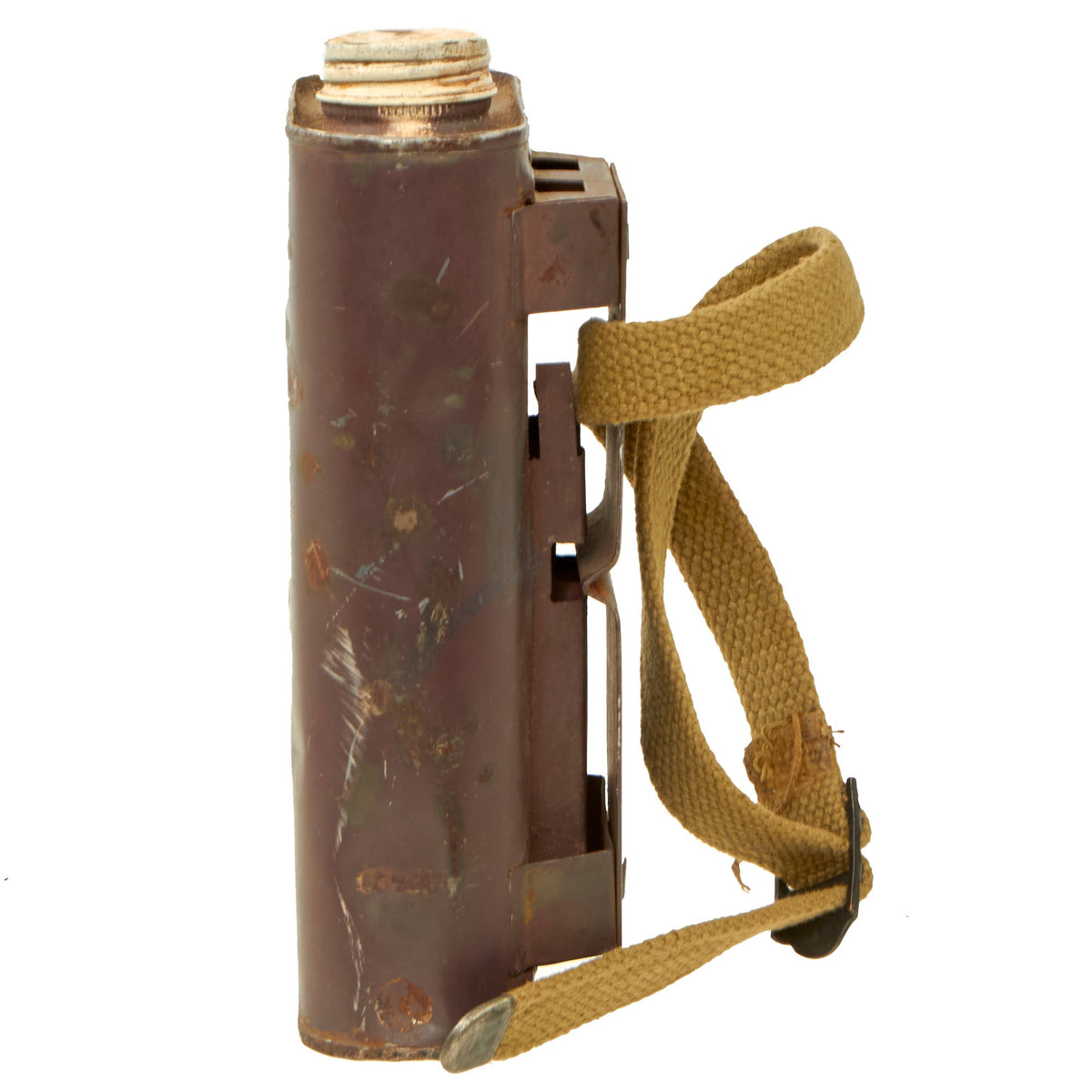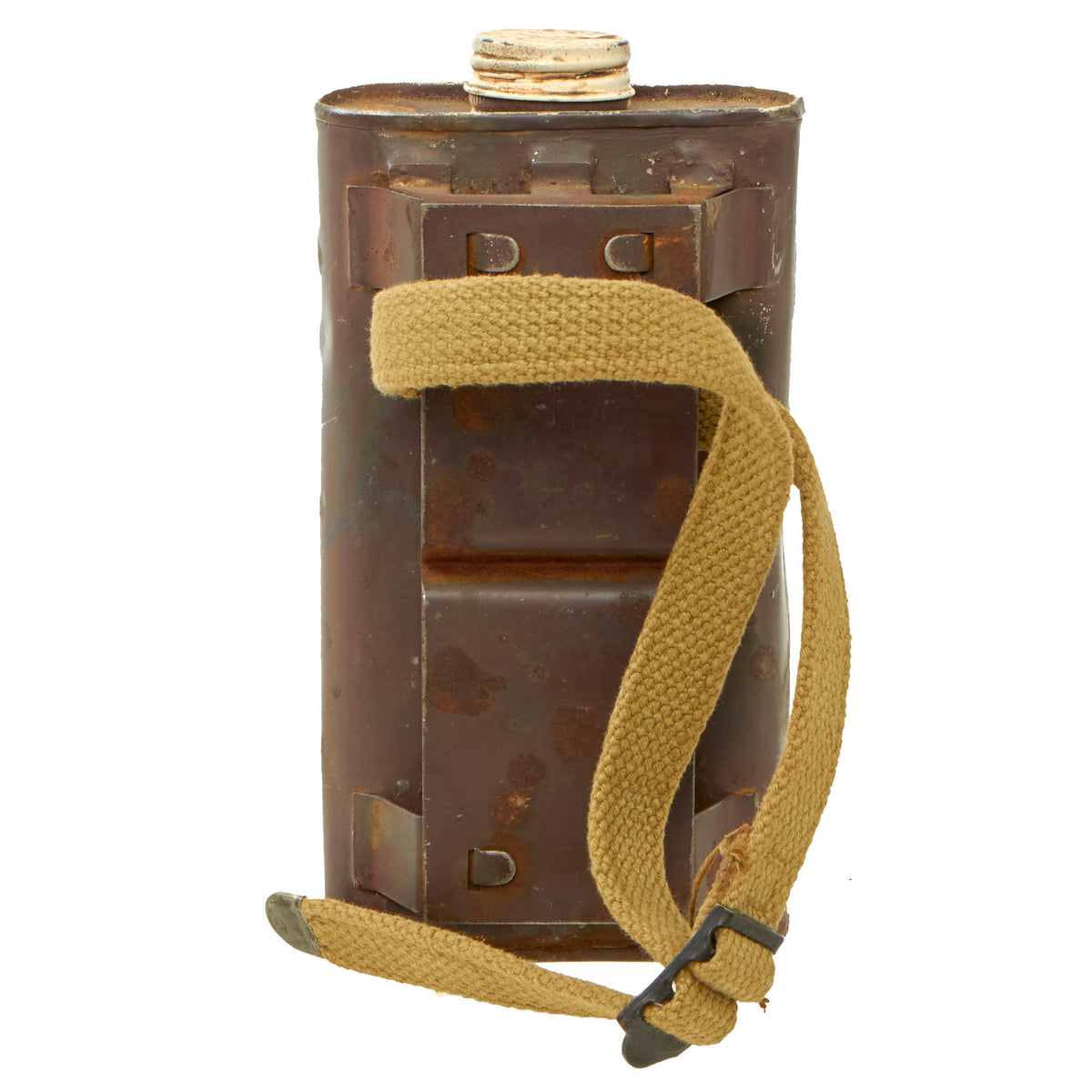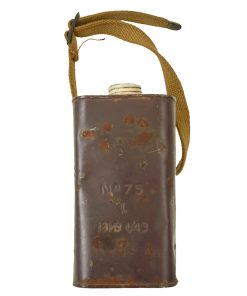Original British WWII Inert No. 75 Anti-Tank “Hawkins” Grenade, As Used By U.S. Airborne Forces – Dated 1943 Original Items
$ 1.895,00 $ 473,75
Original Item: Only One Available. The Grenade, Hand, Anti-Tank, No. 75, also known as the “Hawkins grenade” was a British anti-tank hand grenade used during World War II. It was one of a number of grenades developed for use by the British Army and Home Guard in the aftermath of the Dunkirk evacuation. The grenade first appeared in 1942, and was designed to be more versatile than previous grenades, such as the No. 73 grenade and the sticky bomb.
Unloaded or dummy grenades, artillery shell casings, and similar devices, which are cut or drilled in an BATF-approved manner so that they cannot be used as ammunition components for destructive devices, are not considered NFA weapons. This example is in total compliance and is NOT AVAILABLE FOR EXPORT.
It is rectangular in shape, about 150 millimeters (5.9 in) in length and 75 millimeters (3.0 in) in width, and contained approximately 0.45 kilograms (0.99 lb) of explosive. When a vehicle drove over the grenade, it cracked a chemical igniter and leaked acid onto a sensitive chemical, which detonated the explosive. Multiple grenades were often used to destroy tanks or disable their tracks, and the grenade could also be used as a demolition charge. It was used by the British Army and the United States Army, with the former using it until 1955 and the latter also creating their own variant, the M7 anti-tank mine.
There is little paint present on the body though the stamped markings that are impressed onto the front are still visible. It states that the grenade is in fact a No. 75 and has a date stamp of 1/43. There is no extensive denting present, however there are scattered areas of small dents and light rusting.
A great example of an extremely rare grenade. Comes more than ready for further research and display.
Development
With the end of the Battle of France and the evacuation of the British Expeditionary Force from the port of Dunkirk between 26 May and 4 June 1940, a German invasion of Great Britain seemed likely. However, the British Army was not well-equipped to defend the country in such an event; in the weeks after the Dunkirk evacuation it could only field twenty-seven divisions. The army was particularly short of anti-tank guns, 840 of which had been left behind in France and only 167 were available in Britain; ammunition was so scarce for the remaining guns that regulations forbade even a single round being used for training purposes.
As a result of these shortcomings, a number of new anti-tank weapons had to be developed to equip the British Army and the Home Guard with the means to repel German armored vehicles. Many of these were anti-tank hand grenades, large numbers of which could be built in a very short space of time and for a low cost. They included the No. 73 Grenade, which was little more than a Thermos-sized bottle filled with TNT, and the grenade, hand, anti-tank No. 74, also known as the “sticky bomb”, which was coated with a strong adhesive and stuck to a vehicle. A more versatile grenade appeared in 1942 in the form of the grenade, hand, anti-tank, No. 75, more commonly known as the “Hawkins grenade”, which was designed so that it could be used in a number of roles.
Design
The grenade was rectangular in shape and approximately 150 millimeters (5.9 in) in length and 75 millimeters (3.0 in) in width, and weighed about 1.02 kilograms (2.2 lb). Its explosive content consisted of around 0.45 kilograms (0.99 lb) of blasting explosive, which was usually either ammonal or TNT. On the top of the grenade was a plate, under which the user would insert a chemical igniter, which would act as the weapon’s fuse. When a vehicle drove over the grenade, its weight crushed the plate, which in turn cracked the igniter; this then leaked acid onto a sensitive chemical which detonated the charge. The grenade was designed so that it could either be thrown at a vehicle like an ordinary anti-tank grenade, or placed at a location when used as an anti-tank mine. It was also fitted with areas where blasting caps or cordtex could be placed, so that it could be used as a demolition charge. When the grenade was used, it was recommended that the user be within a short distance of their target, ideally concealed within a trench; if the target were an armored vehicle, then the best areas to target were the sides and rear, where the engine compartment was located and armor was generally thinner.
Operational history
Introduced in 1942, the grenade saw service with the British Army until 1955. The United States Army also used the grenade, as well as developing their own variant known as the “M7 light anti-tank mine”. When used in an anti-tank role, a number of the grenades could be strung together in a “daisy chain” at intervals of around two feet, and then placed across a road to damage an armored vehicle. It was particularly effective at damaging the tracks of tanks. When sufficient grenades were grouped together, they were capable of disabling a medium tank. The Hawkins was also used in other roles, such as breaching walls, and its small size also meant that it could easily be placed into the “web” of a railway line and, when detonated, destroy a section of track. The weapon received the nickname “Johnson’s Wax tin” due to its appearance to a commercially produced floor treatment product. In the Battle of Ortona Canadian troops used them as demolition charges to “mousehole” between buildings.
Fast Shipping with Professional Packaging
Thanks to our longstanding association with UPS FedEx DHL, and other major international carriers, we are able to provide a range of shipping options. Our warehouse staff is expertly trained and will wrap your products according to our exact and precise specifications. Prior to shipping, your goods will be thoroughly examined and securely secured. We ship to thousands clients each day across multiple countries. This shows how we're dedicated to be the largest retailer on the internet. Warehouses and distribution centres can be located throughout Europe as well as the USA.
Note: Orders with more than one item will be assigned a processing date depending on the item.
Before shipping before shipping, we'll conduct a thorough inspection of the items you have ordered. Today, the majority of orders will be delivered within 48 hours. The delivery time will be between 3-7 days.
Returns
The stock is dynamic and we cannot completely manage it because multiple stakeholders are involved, including our factory and warehouse. So the actual stock may alter at any time. It's possible that you may not receive your order once the order has been made.
Our policy is valid for a period of 30 days. If you don't receive the product within 30 days, we are not able to issue a refund or an exchange.
You can only return an item if it is unused and in the same state as the day you received it. You must have the item in its original packaging.
Related products
Uncategorized
Uncategorized
Angolan Rebel 1970s era 60mm Inert Display Mortar from Angolan Civil War Original Items
Uncategorized
Uncategorized
Uncategorized
Uncategorized
Band of Brothers ORIGINAL GERMAN WWII Le. F.H. 18 10.5cm ARTILLERY PIECE Original Items
Uncategorized
Australian WWII Owen MK1 Machine Carbine SMG Custom Fabricated Replica with Sling Original Items
Uncategorized
Uncategorized
Uncategorized
Uncategorized
Armoured Fighting Vehicles of the World: AFVs of World War One (Hardcover Book) New Made Items
Uncategorized
Uncategorized
Uncategorized
Uncategorized
Uncategorized
